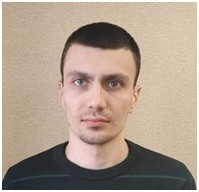As of April 25, raw milk prices in Ukraine decreased by 13-17 kopecks, compared to March. Processors reduce prices for raw materials in connection with the weak demand for dairy products on the domestic and foreign markets, due to the fall in milk prices in Europe, and in addition - due to the blocking of exports and the paralyzed transit of dairy products through the EU countries neighboring Ukraine, reports analyst of the Association of Milk Producers Giorgiy Kukhaleishvili.
The average purchase price of extra grade milk dropped to UAH 12.01/kg without VAT, which is 17 kopecks less than in March. The price range for this variety in farms varies from UAH 10.84/kg to UAH 12.50/kg. The upper limit of the price range decreased by 20 kopecks.
The price of the higher grade was UAH 12.01/kg without VAT, which is 17 kopecks higher. lower than in March. Prices for premium milk range from UAH 10.00 to 12.10/kg without VAT.
The average price of first grade milk decreased by 13 kopecks, compared to March, and amounted to UAH 11.54/kg without VAT. The minimum price in farms was UAH 10.00/kg, and the maximum was UAH 11.80/kg.
Accordingly, the weighted average price of three varieties fell by 4 kopecks. and amounted to UAH 11.85/kg without VAT.
According to Georgii Kukhaleishvili, the decrease in purchasing prices for raw milk is connected with the adaptation of Ukrainian producers to the difficult realities of the market. There is a decrease in the demand for dairy products in the world. According to market operators, it has become unprofitable to dry milk and produce monolith butter in Ukraine, and such protein products as milk powder, whey, and casein accumulate in warehouses in conditions of limited demand.
China, the countries of Southeast Asia and the post-Soviet space import less milk powder, butter and other dairy products. In the EU, the price of raw milk continues to fall, and warehouses are filled with exchange goods, the amount of which exceeds the demand on the markets of the member countries.
Recently, the Polish government introduced a temporary ban on the import of Ukrainian agricultural products, including dairy products, under pressure from local market operators who faced the problem of selling their products and are interested in reducing competition on the domestic market. Although, Polish producers of dairy products emphasize to their government the inadequacy of such bans on the import of dairy products from Ukraine and call for their removal as soon as possible, because they are rightly afraid of mirror measures regarding the ban on the import of Polish milk into the territory of Ukraine: according to the results of 2022, the monetary equivalent of Polish dairy imports products to Ukraine amounted to 208 million euros or 3% of the country's total dairy exports, while the monetary equivalent of Ukrainian products on the shelves of Poland is 5 times smaller.
The European dairy trade association Eucolait also opposed the recent actions of Poland, Hungary and Slovakia regarding the ban on the import and transit of Ukrainian agri-food products, in particular dairy products, because in general the impact of the import of dairy products from Ukraine was minimal across the EU, and they call on the European Commission to intervene to protect the preferential regime trade and solidarity with war-torn Ukraine.
A sharp drop in milk prices in Europe began in the second half of last year. In the first half of 2022, European companies significantly raised the purchase prices for raw milk due to reduced production due to drought in Europe and floods in Oceania. They counted on traditionally high demand from China, but their forecasts did not come true. The Chinese reduced the import of dairy products, in particular dry milk, after the introduction of another quarantine. Milk in Europe started to become cheaper. Local processors used available raw materials for the production of milk powder, butter and cheeses. Even after lifting the quarantine, China continued to reduce imports of butter and milk powder, increasing the production of its own raw materials.
By the way, the situation with the demand for dairy products within Ukraine remains uncertain. Over the past year, about 9 million citizens have left the country, and their return is unlikely as long as the war continues. The consumption of dairy products in Ukraine is decreasing due to a decrease in the purchasing power of a significant number of Ukrainians. Consumers are forced to save, including by reducing the consumption of dairy products in conditions of job loss or reduced income.
Reduction of prices for raw milk is a forced step on the part of factories. At the same time, farmers were faced with an increase in the cost of production of raw materials in war conditions. Also, there are risks of increasing feed prices due to a decrease in the amount of land suitable for crop production as a result of hostilities. In Kherson, Mykolaiv, Kharkiv and other war-affected regions, more than 800,000 hectares of agricultural land need demining. A dairy farm needs one hectare per cow to produce an annual supply of roughage, that is, at least five hundred hectares for a farm with 500 cows. The Association of Milk Producers, the Ministry of Agrarian Policy and the Ministry of Economy are working to attract international donors for the purchase of special automated demining equipment.
Also, the Association of Milk Producers advocates the adoption of the law "On Amendments to the Tax Code of Ukraine on Lowering the Value Added Tax Rate for Milk and Dairy Products", which will create legal grounds for lowering the VAT rate for milk producers and processors from 20% to at least 10% % and as a result will contribute to the reduction of prices for dairy products in the interests of Ukrainian consumers.
Press service of the Association of Milk Producers


